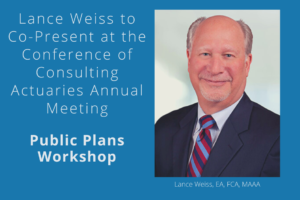Industry News
NASRA Publishes Public Fund Survey Summary of Findings for FY 2021
On October 26, 2022, the National Association of State Retirement Administrators (NASRA) released its Public Fund Survey Summary of Findings for FY 2021. For the first time since the inception of the Public Fund Survey, systems and plans have been added this year. The survey presents key data from 100 public defined benefit (DB) retirement systems with 128 plans, covering 13.2 million active members, 10.3 million retirees and other annuitants, and holding $4.82 trillion in assets.
Overall, the retirement systems surveyed represent approximately 88% of state and local DB plan membership and assets as of Fiscal Year (FY) 2021. The Summary of Findings presents information regarding plan funding, membership, benefits, contribution rates, cash flows, and actuarial assumptions.
The NASRA analysis notes that, due to the COVID-19 pandemic, there was an unusual level of economic and investment market volatility which has continued since early 2020. Notable in the update is the improvement in the aggregate funding level to 74.9% which varies from the previous nine consecutive years of ranging from 71.8% to 73.7%. The predominant factor impacting higher funding levels in FY 2021 was strong investment returns. These strong investment returns also helped to raise annualized public pension fund returns for the 10 years ended 6/30/21 at 8.6% and 9.6% for the 10 years ended 12/31/21. However, NASRA indicated that, due to a sharp decrease in investment returns in FY 2022, next year there may be “a decline in both the aggregate public pension funding level and aggregate asset values held by retirement systems.”
According to the report:
- The aggregate funding level for the surveyed plans was 74.9% in FY 2021, up slightly from the prior year. Between FY 2020 and FY 2021, the aggregate actuarial value of assets increased 7.1% from $3.86 trillion to $4.13 trillion. The combined actuarial value of liabilities increased 3.7% from $5.32 trillion to $5.51 trillion. Many state and local plans smooth investment gains and losses into the actuarial value of assets over time (typically five years and sometimes longer).
- Growth in pension liabilities remains at a median rate below 4.0% for the fourth consecutive year, as a result of various factors such as plan maturity, low salary growth and employment levels among states and local governments and the effects of many pension benefit reforms (mainly reductions) enacted in recent years.
- The average allocation of plan assets to public equities has declined steadily since the major decrease in global capital markets in 2008-2009. In FY 2021, the allocation to fixed income securities declined slightly to 21.2% and equities at about 47.0%. In recent years, allocations to real estate declined slightly to 6.8% and allocations to alternative investments (such as private equity and hedge funds) has continued to grow reaching the 22.6% threshold for the first time.
- For most of the Public Fund Survey’s measurement period, the median investment return assumption used by public pension plans was 8.0%. However, in FY 2021, the median actuarial assumption for investment return was 7.0%. Notably, since 2009, many plans have reduced their investment return assumptions.
- Since the inception of the survey, employer contribution rates have increased significantly mainly due to larger unfunded pension liabilities and often include lower investment return assumptions. For some plans, higher employer contribution rates are the result of a disciplined approach to contribute all or more of their actuarially determined contributions.
The survey data is available for each individual retirement system and plan in Appendices A and B. The data includes: plan membership, plan assets and liabilities, and actuarial funding levels.
The summary is available here.


